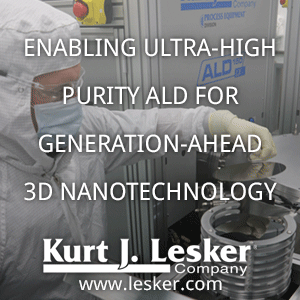Hydrofluoric acid (HF) is the Achilles heel of thermal ALE of silicon and metal oxides. It is dangerous stuff to work with and if the HF it self will not kill you the yearly safety updates will. It is not that uplifting to sit and watch pictures of HF accidents - I tell you! Besides that to handle liquid HF your ALE pimped ALD reactor will mean that you have to passivate all lines with HF prior to operation or alternatively rebuild the system using nickel valves and tubes instead.
So for anyone that has been through the procedure to use HF outside the regular chemical labs and are eager to get going with thermal ALE of oxides this should come as promising news. You can actually possibly skip HF and get on with the more reasonable friend fluoroform (CHF3) by using an additional water pulse that removes the fluorinated passivation. Or at least so it seems - Check it out!
So now we all wonder if CHF3 can be swapped for NF3...
Thermal Atomic Layer Etching of Silica and Alumina Thin Films Using Trimethylaluminum with Hydrogen Fluoride or Fluoroform
Rezwanur Rahman, Eric C. Mattson, Joseph P. Klesko, Aaron Dangerfield, Sandrine Rivillon-Amy, David C. Smith, Dennis Hausmann, and Yves J. Chabal
Rezwanur Rahman, Eric C. Mattson, Joseph P. Klesko, Aaron Dangerfield, Sandrine Rivillon-Amy, David C. Smith, Dennis Hausmann, and Yves J. Chabal
ACS Appl. Mater. Interfaces, Article ASAP DOI: 10.1021/acsami.8b10899
https://pubs.acs.org/doi/10.1021/acsami.8b10899
Reprinted with permission from (ACS Appl. Mater. Interfaces, Article ASAP DOI: 10.1021/acsami.8b10899) Copyright (2018) American Chemical Society.
Thermal atomic layer etching (ALE) is an emerging technique that
involves the sequential removal of monolayers of a film by alternating
self-limiting reactions, some of which generate volatile products.
Although traditional ALE processes rely on the use of plasma, several
thermal ALE processes have recently been developed using hydrogen
fluoride (HF) with precursors such as trimethylaluminum (TMA) or tin
acetylacetonate. While HF is currently the most effective reagent for
ALE, its potential hazards and corrosive nature have motivated searches
for alternative chemicals. Herein, we investigate the feasibility of
using fluoroform (CHF3) with TMA for the thermal ALE of SiO2 and Al2O3
surfaces and compare it to the established TMA/HF process. A
fundamental mechanistic understanding is derived by combining in situ
Fourier transform infrared spectroscopy, ex situ X-ray photoemission
spectroscopy, ex situ low-energy ion scattering, and ex situ
spectroscopic ellipsometry. Specifically, we determine the role of TMA,
the dependence of the etch rate on precursor gas pressure, and the
formation of a residual fluoride layer. Although CHF3 reacts
with TMA-treated oxide surfaces, etching is hindered by the concurrent
deposition of a fluorine-containing layer, which makes it unfavorable
for etching. Moreover, since fluorine contamination can be deleterious
to device performance and its presence in thin films is an inherent
problem for established ALE processes using HF, we present a novel
method to remove the residual fluorine accumulated during the ALE
process by exposure to water vapor. XPS analysis herein reveals that an
Al2O3 film etched using TMA/HF at 325 °C contains
25.4 at. % fluorine in the surface region. In situ exposure of this film
to water vapor at 325 °C results in ∼90% removal of the fluorine. This
simple approach for fluorine removal can easily be applied to
ALE-treated films to mitigate contamination and retain surface
stoichiometry.



%20(1).png)

Thermal ALE of silica and alumina using TMA with Hydrogen Fluoride or Fluoroform enables precise etching control. This process can be optimized using tools like alv laskuri for accurate layer-by-layer material removal analysis.
ReplyDelete